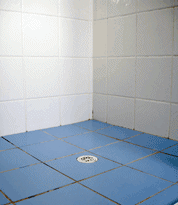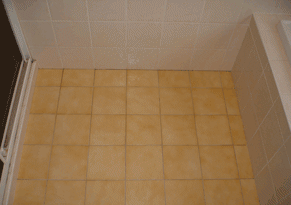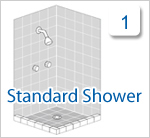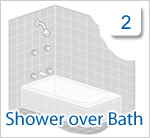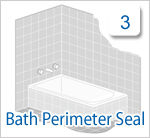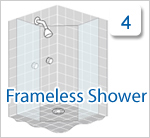Self diagnosing. Do you need us to repair our leaking shower?
Before enlisting the services of a professional only to potentially be told that the job is outside their field and have them refer you to us, we recommend you do a preliminary inspection yourself using the following guide. If you’d prefer getting help directly from one of our team, please call us on 1300 366 569.
This guide outlines the scope of basic and preliminary inspection activities - you are looking only for the most obvious concerns. This list is by no means exhaustive or applicable to every building, but is provided as a useful checklist to help you through the basics, and establish when expert advice and assistance is needed.
Visual inspection.
Visually inspect the water damage and/or affected area to ascertain the probable type of leak – is it constant or periodic?
If it is a constant leak worsening over time, there is a good chance the source is in the pressurised plumbing pipes.
Usually, a leak is periodic. This means there are only visible signs of a problem when the shower/bath is in use or afterwards.
taps.
Visually inspect behind the flanges for moisture entering through the surface material penetration and/or as a result of a body washer or spindle fault.
Accessory fixtures / fittings.
Check accessories fixings and penetrations in surface material. (Hollow wall anchors are a prime entry point).
Shower Screen.
Inspect:
- glazing rubbers to the panels.
- all channel, frame and panel joints for sealant.
- frame, channel and wall surface material intersection for sealant.
- frame, channel and bottom track and floor/hob material intersection for sealant.
Grouting.
Inspect the tiled wall area grout lines for holes, cracks, missing grout and other possible defects.
Inspect the floor grout area for holes, cracks, missing grout and other possible defects.
Note: Hairline cracks in floor joints are often evident by the presence of efflorescence and carbon calimite.
Efflorescence is a white crystalline or powdery, often fluffy/fuzzy deposit on the surface of masonry materials like concrete, brick and clay tile. It's caused by water seeping through the wall/floor/object. The water dissolves salts inside the object while moving through it, then evaporates, leaving salt on the surface.
PVC edge trims.
check for holes, or missing grout along the trim.
Floor waste.
Inspect the outer perimeter grout for holes, cracks, missing grout and other possible defects.
Drop-in grates - check that all exposed bedding or adhesive edges are sealed to prevent capillary action.
Wall & floor tiles and tiling.
Is there cracking in vertical corners of tiles due to movement?
Can you see a gap between the wall and floor tiles along the internal corners of the shower base?
Loose, cracked, crazing cracks or drummy tiles.
Note: Drummy or hollow sounding tiles can easily be detected by tapping or running over the tile surface with a small metal object such as a key, coin or the plastic handle of your screwdriver. If you hear a dense sound, the tiles and screed or bed are generally solid. However, if the sound is hollow this is due to the adhesive bond between tiles and wall or floor breaking down.
A video is aviable in our
repairs gallery in relation to drummy wall and floor tiles. Should you require additional information regarding terms used in the above or within any other page, please visit our glossary of terms.
Please note.
This information is meant solely to aid the home owner. In no way should this basic diagnosis guide be considered a full inspection, appraisal or conclusive in any manner. Your DiaOseal technician will not only do these basic checks with a trained and experienced eye but will include more physical tests and checks plus in-depth observation. However, this brief inspection outline will aid in eliminating some of the possible causes of your leaking shower problem.
To discuss your diagnosis with an expert, call us on 1300 366 569.
|
|


